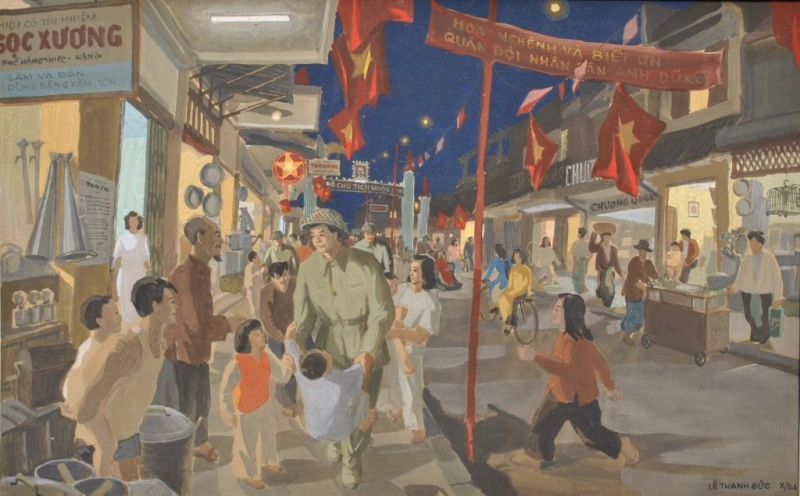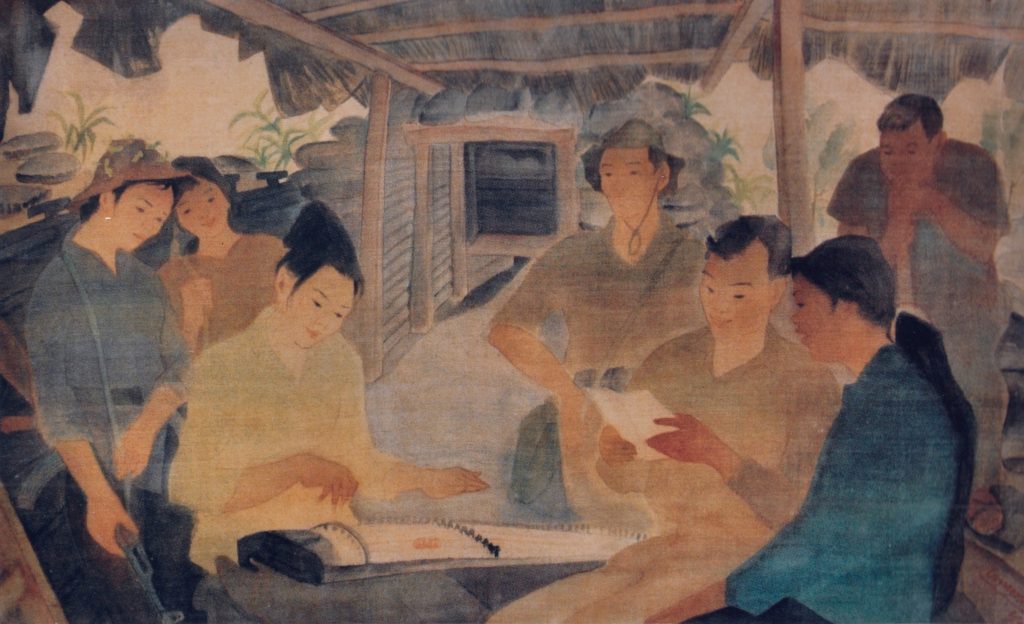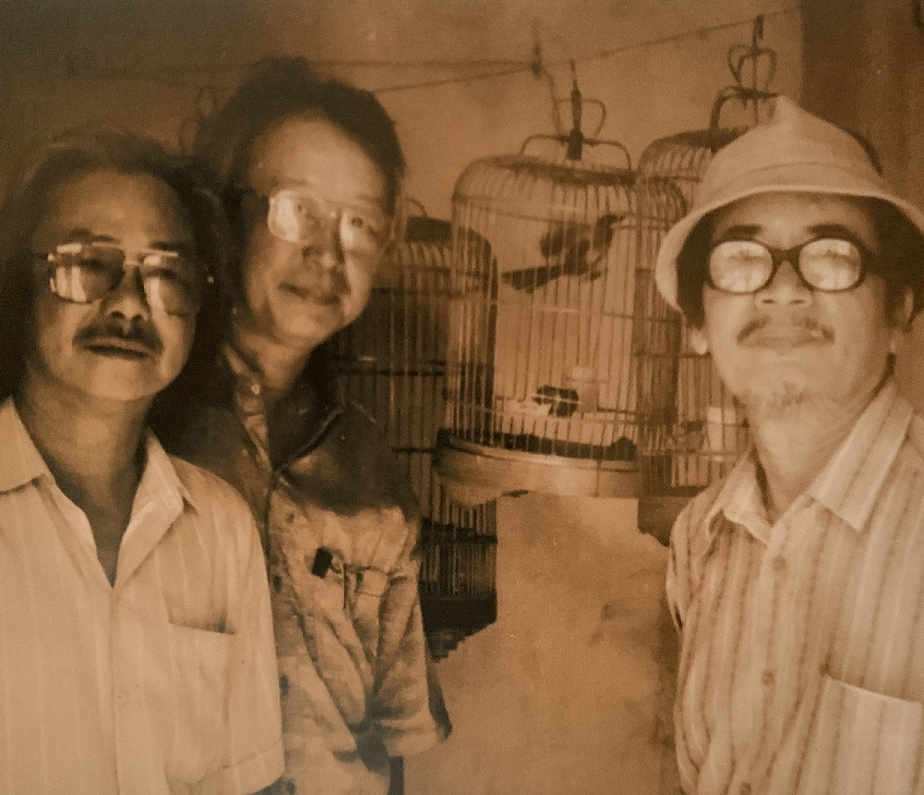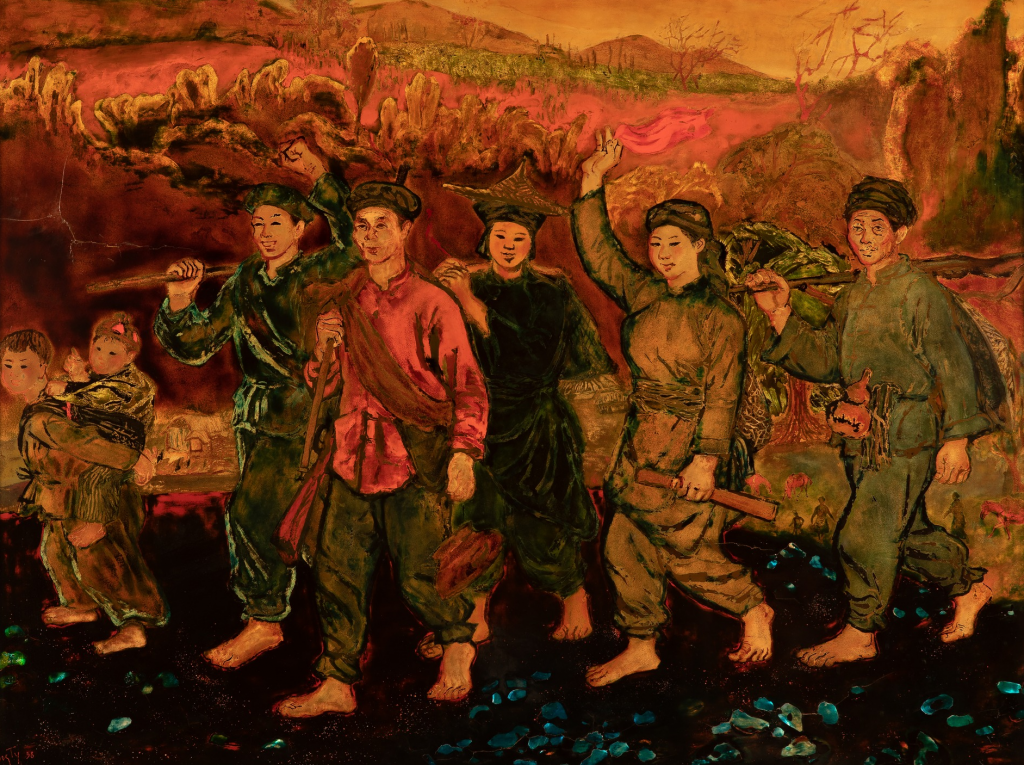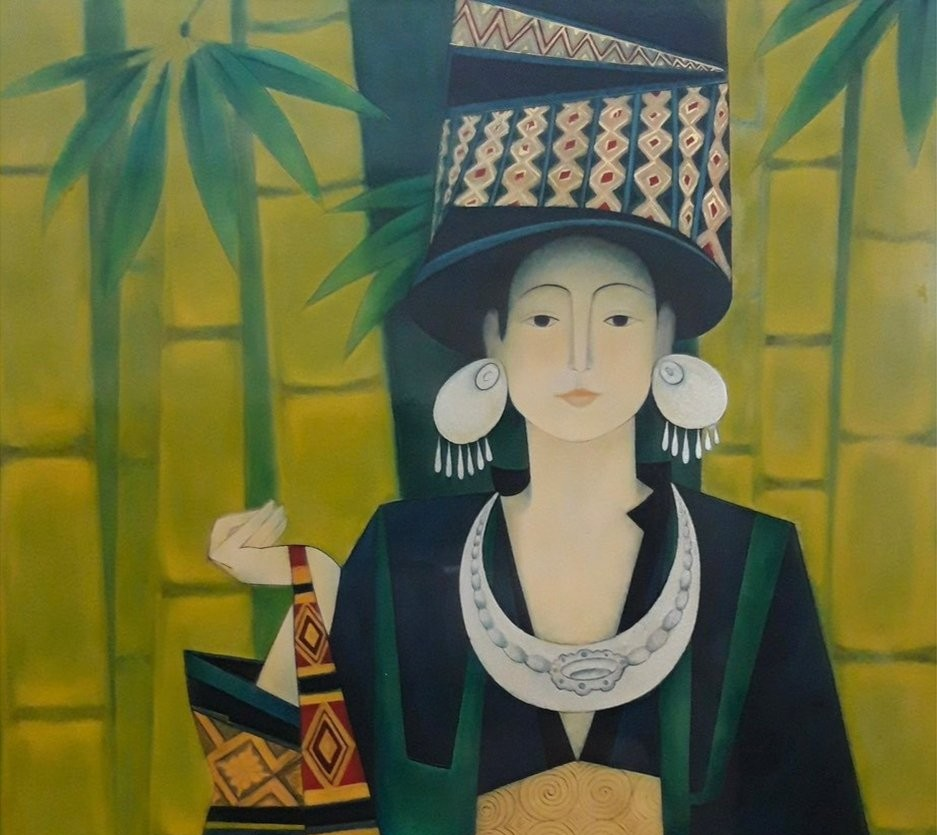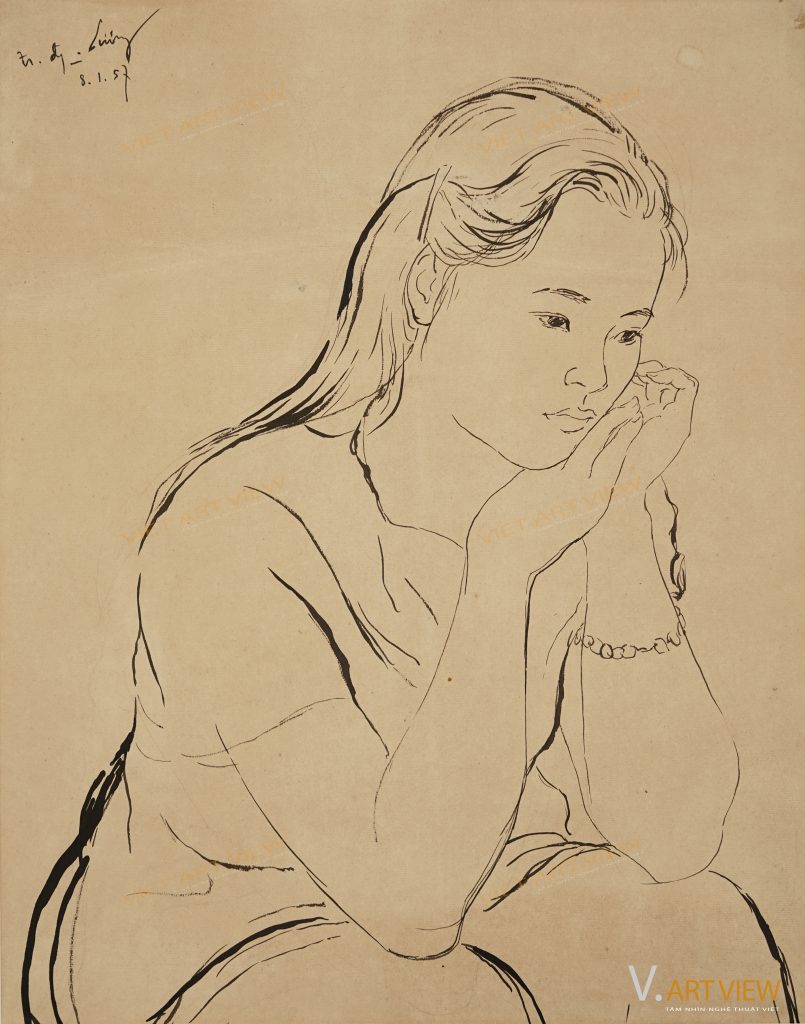For art collectors, especially those who like to collect high-end fine art paintings from pre-1975 Southern fine art companies such as Thành Lễ, Trần Hà or Mê Linh, painter Trương Văn Thanh is a mysterious figure. Through stories pieced together from painters and collectors before 1975, Trương Văn Thanh and Nguyễn Thành Lễ established Thanh & Lễ Fine Art Company, a fine crafts company with many highly appreciated lacquer, lacquer engraving and inlaid products. “Thanh & Lễ” is the precursor of the later famous Thành Lễ Company.

Portrait of artist Trương Văn Thanh (1918 – 1992)
There are not many documents written about Trương Văn Thanh, although later when he separated from the company Thanh & Lễ, he had his own fine crafts company under his name and was still considered a company with many good products, one of the best fine crafts group before 1975 and even after. In the book “Yearbook of Artists and Vietnamese Cultural Associations 1969-1970”, painter Trương Văn Thanh was only mentioned with a few brief lines: born on March 18, 1918 in Tân Thuận Đông, Sa Đéc, studied at the Ceramics, Lacquer and Sculpture School of Bình Dương, Thủ Dầu Một province for four years, and the associations he was participating in.
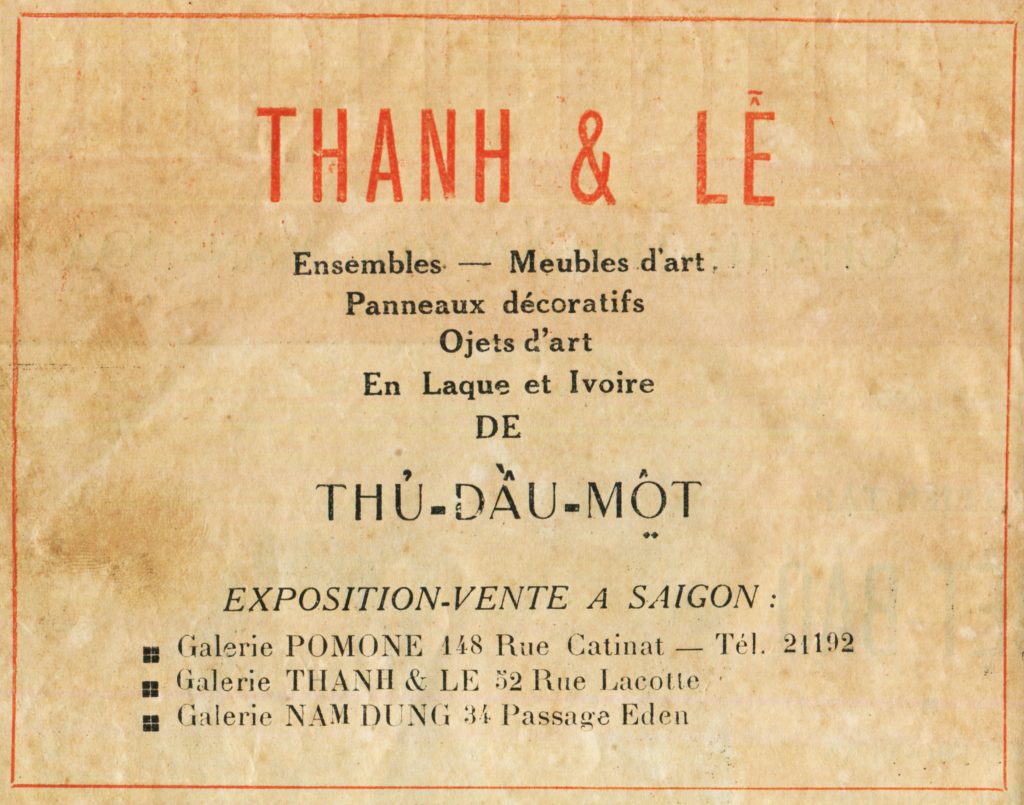
During their lifetime, painter Trương Văn Thanh and painter Nguyễn Văn Rô were close to each other. The two families occasionally had trips together. Through the help of relatives in the family of painter Nguyễn Văn Rô in Switzerland, I was fortunate to exchange letters with Ms. Ngọc, the youngest daughter of Mr. Trương Văn Thanh, who is living in this country. Ms. Ngọc is one of three daughters of painter Trương Văn Thanh, and all three went to study abroad before 1975 in the US and Switzerland. They all went abroad when they were teenagers. When they were young, they were only interested in studying, so they did not understand much about their family’s work, they could only tell a few details about their father.
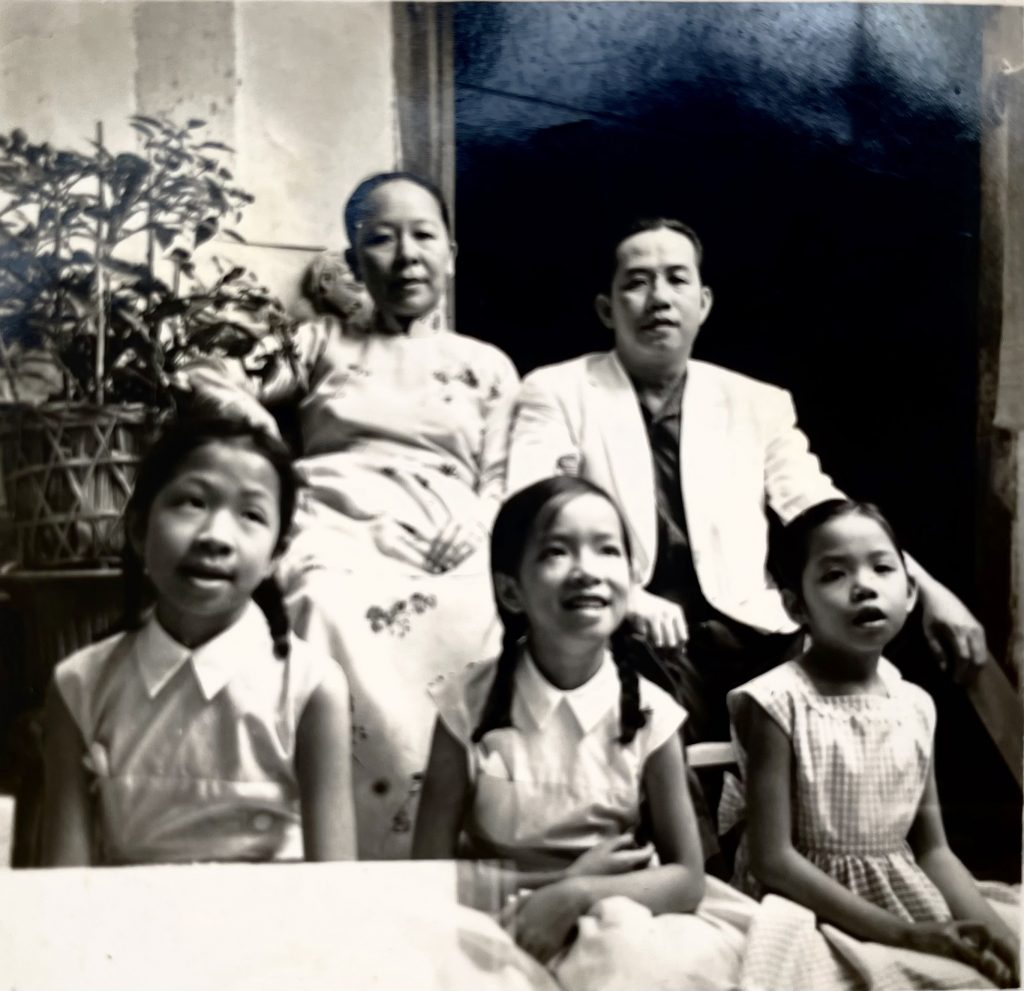
Ms. Ngọc said that Mr. Trương Văn Thanh was a friend of Mr. Nguyễn Thành Lễ when he was young because they both studied at Bình Dương Fine Arts School. Mr. Trương Văn Thanh was only one year older than Mr. Thành Lễ. When he finished learning lacquer, Mr. Thanh initially made some small lacquer vases and paintings and displayed them on the sidewalk to sell to passersby. Mr. Lễ took care of the business, while Mr. Thanh’s main job was to produce various products. From the same poor background, thanks to keeping the profession and knowing how to do business, they gradually became rich, and together opened Thanh & Lễ fine crafts company in Thủ Dầu Một in 1940. The company specialized in producing wooden handicrafts in sets, decorative screens, handicrafts, lacquer and ivory paintings in Thủ Dầu Một. The company developed over time, recruited many employees and workers, and had up to three showrooms in Sài Gòn: Pomone showroom at 148 Catinat street, Thanh & Lễ showroom at 52 Lacotte street and Nam Dzung at 34 Eden corridor.

TRƯƠNG VĂN THANH (1918-1992). ‘The village’. Lacquer, signed lower right
60,5 × 121,5 cm – 23 13/16 × 47 7/8 inch.

Trương Văn Thanh (1918-1992). Lanscape of the countryside with an old pagoda. 1950. Lacquer. 50×80 cm.
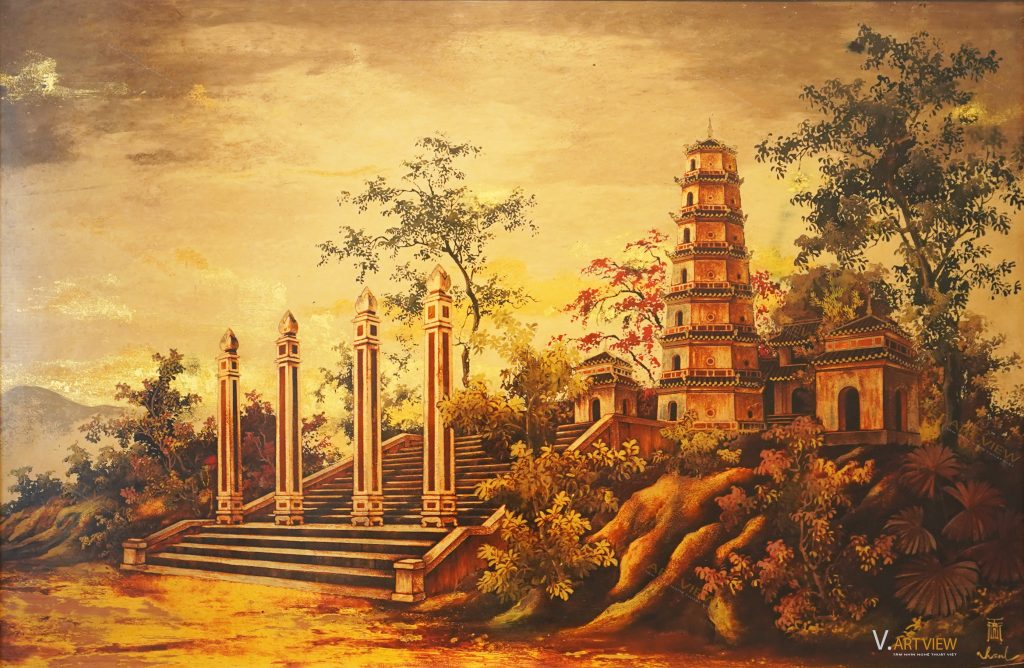
Trương Văn Thanh (1918-1992). Thiên Mụ Pagoda. Circa 1960 -1970. Lacquer. 41×61 cm.
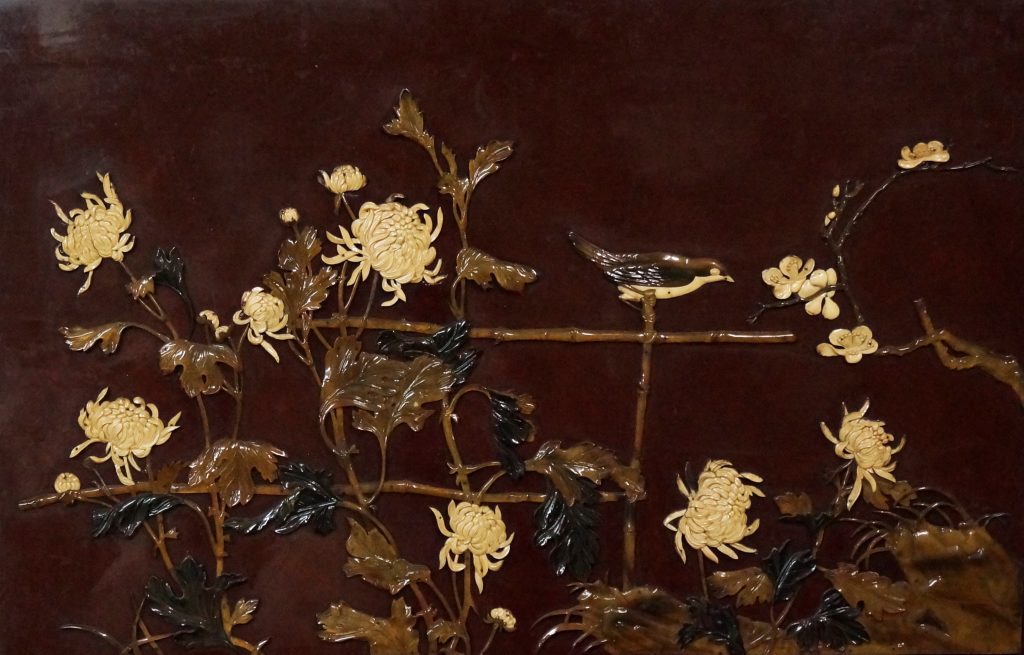
A work of “Thanh & Lễ” lacquer workshop
According to artist Ba Tuyền, who worked from the beginning when Thanh & Lễ company was established and later for Thành Lễ company, the assignment in Thanh & Lễ company was as follows: Mr. Trương Văn Thanh was in charge of the workers, taking care of the technical part. Mr. Thành Lễ took care of communicating and signing contracts. Since he started making the product, Mr. Trương Văn Thanh had kept a strict process in lacquer making, requiring six layers of paint, each layer must wait for it to dry completely before applying the next layer. His fine art products are of good quality but his capital is low, he had to wait a long time for the goods to be done to sell.
Having worked together for a long time, disagreements appeared between the two of them. By the early 1960s, the two men separated. Mr. Nguyễn Thành Lễ founded Thành Lễ factory. Mr. Trương Văn Thanh also opened a company under his name.
Antiques collector Nguyễn Trọng Cơ, who knows Mr. Thanh’s family, said that Mr. Trương Văn Thanh, as the technical manager, wanted to strictly keep the process and time of lacquer making to avoid complaints from customers. But Mr. Thành Lễ was the one who signed the contract, so he was always under pressure from customers about progress. In addition, there were some other reasons why conflicts arose. Those disagreements could not be resolved, so the two separated completely.
When the company divided, Mr. Thành Lễ’s wife was from Bình Dương, so he received the factory in Thủ Dầu Một. Mr. Trương Văn Thanh bought the house at 52 Lacotte Street (now Phạm Hồng Thái), Sài Gòn (opposite the New World Hotel today), 7 meters wide, a hundred meters deep, and opened the “Laquer fine crafts and sculpture workshop of Trương Văn Thanh”. This place is beautifully decorated, with careful attention to each decorative pattern. His company produced and sold fine crafts works, paintings, tables and chairs made of lacquer to decorate the living room, dining room and bedroom.
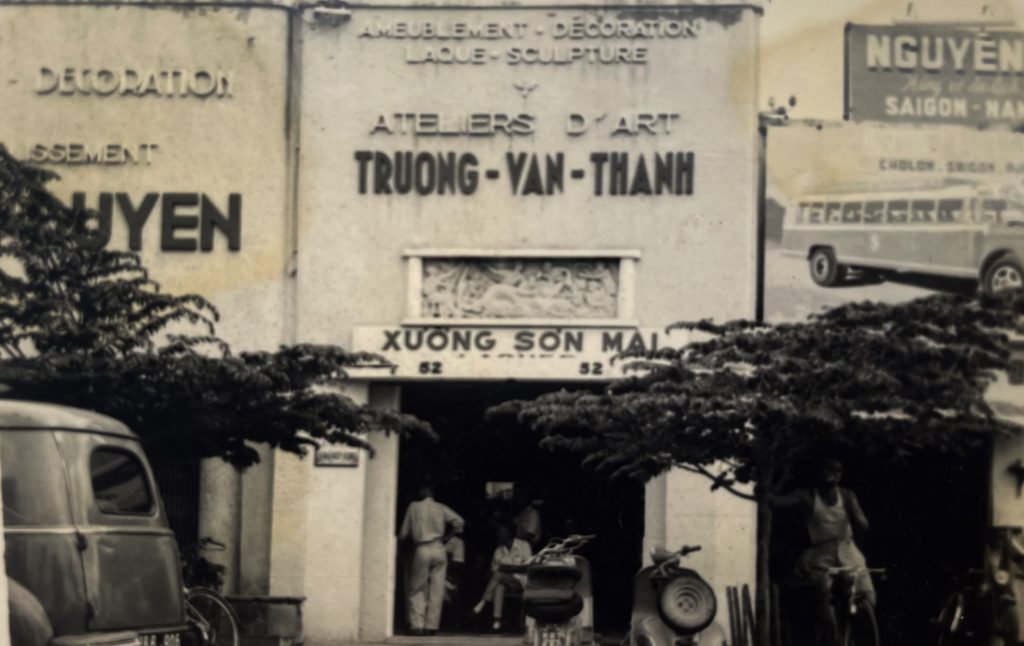
The lacquer fine crafts and sculpture workshop of Trương Văn Thanh
As for Thành Lễ company, after being separated over time, it became very successful in production and business, and was mentioned a lot in the press. When the press at that time talked about Southern fine crafts, they first mentioned Thành Lễ company, then other famous fine crafts manufacturers even though they did not have as large a production scale, including Trần Hà, Trương Văn Thanh and Lê Thy.
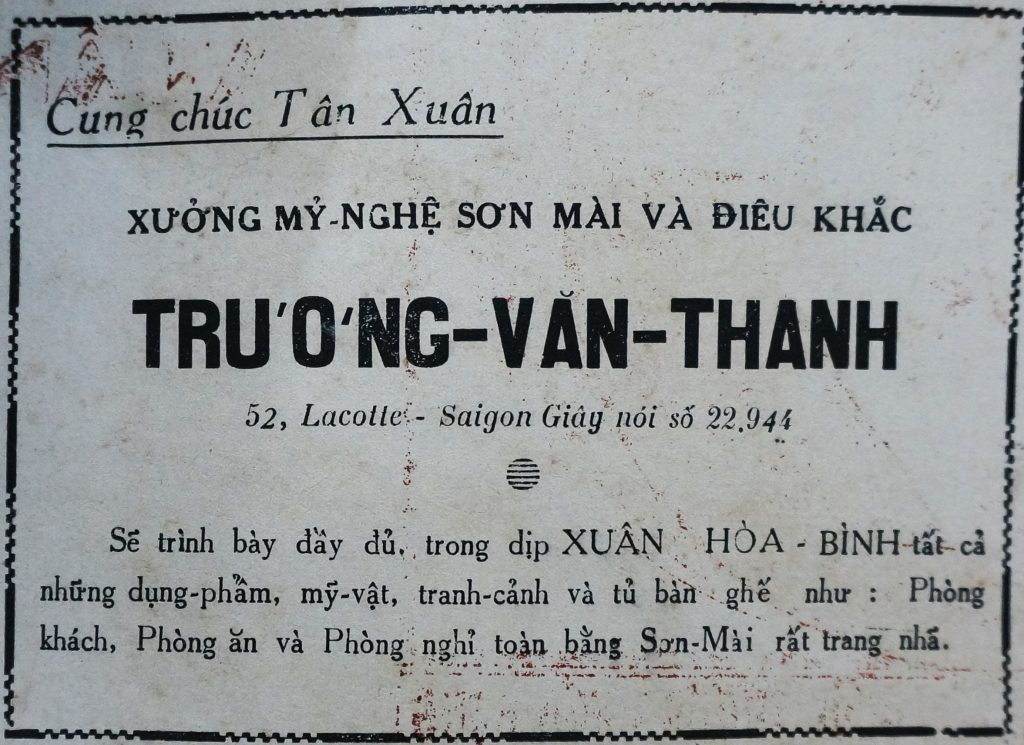
Before 1975, artist Trương Văn Thanh not only painted, produced fine crafts, but also participated in many social activities, running associations such as the Nam Việt decorative painting union, the Vietnamese Cultural Association, and the Red Cross Association and Buddhist associations in the South. In Ms. Ngọc’s memory, her father was a person who loved his family very much. His personality is cheerful, he liked to tell jokes to people with a serious expression until everyone burst out laughing. But when he worked, he was meticulous, so he did not make much profit in business even though he produced many quality products. In 1971, Ms. Ngọc went to Switzerland to study. Before leaving, all three sisters only worried about studying to pass the exam with high scores so they could easily apply to go abroad, then they did not follow their father’s job. She only remembers that at that time, there were about 5 or 6 workers in the house working on inlaying eggshell, lining gold, painting on wood… these were important steps for customers to come to watch, including French customers coming to watch in person how lacquer is made.
After 1975, according to artist Nguyễn Lâm, even though he was over 60 years old, artist Trương Văn Thanh still worked and cooperated to help the city’s Department of Foreign Trade produce lacquer paintings for export to capitalist countries. Around 1980, he took painter Nguyễn Lâm to meet people from the Department of Foreign Trade to discuss making lacquer paintings for export to France, Germany, and Belgium. After that, Mr. Nguyễn Lâm gathered a group of seven artists to carry out the project including Nguyễn Siên, Nguyễn Lâm, Hồ Hữu Thủ, Hiếu Đệ, Văn Đen, Nghiêu Đề and Đỗ Quang Em. This was the turning point that later, two painters Nguyễn Lâm and Hồ Hữu Thủ wholeheartedly followed and strongly developed their own lacquer art.
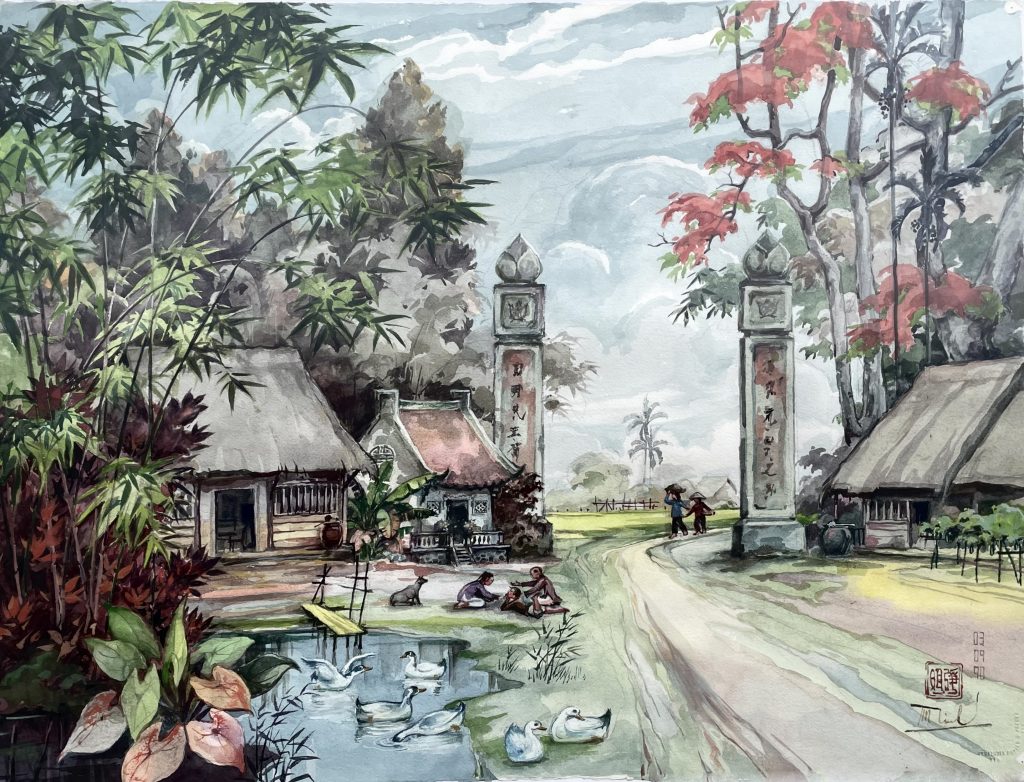
The painting created by artist Trương Văn Thanh when he visited his daughters in Switzerland, 1990
Around 1990, while visiting his daughters in Switzerland, artist Trương Văn Thanh made some paintings with watercolor and oil for his daughter. Those paintings are painted with bright colors, elegant scenes and a meditative quality, saving some of his talent. Perhaps it was the last time he saw his children. He fell ill and became a monk at Ấn Quang Pagoda on Sư Vạn Hạnh Street and died on day 4 of the seventh month, Nhâm Thân year [the year of the monkey], is August 2, 1992. The farewell ceremony for him held at Ấn Quang Pagoda was very solemn.
Article by Researcher Phạm Công Luận


